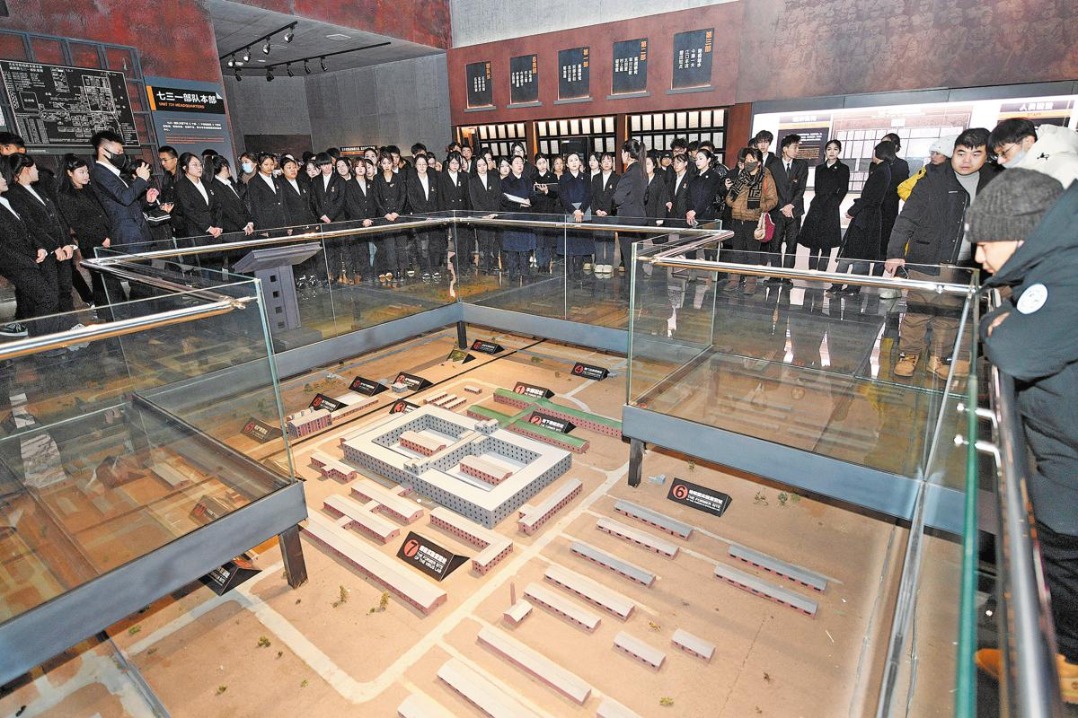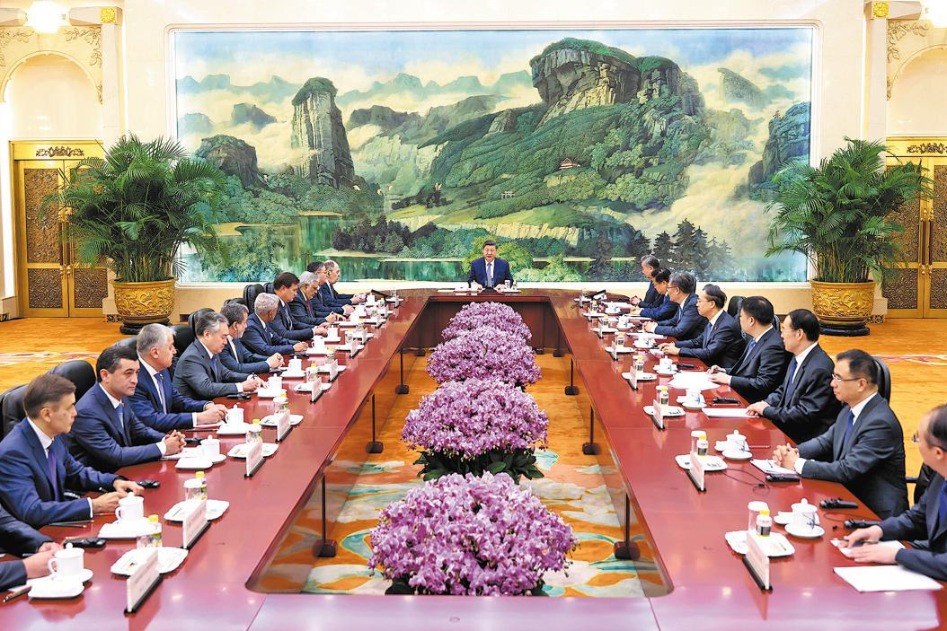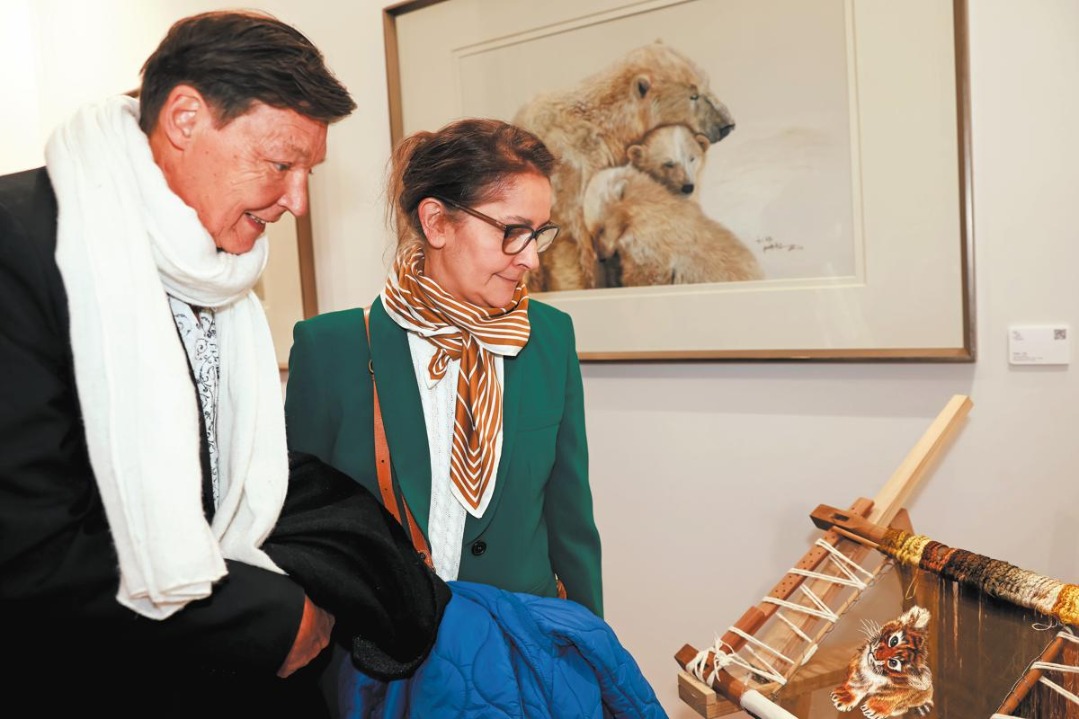Guarding lacquerware's lustrous legacy
Artisan dives deep into researching craft's history to master the tradition while adding innovations and passing his skills on to future generations, Zheng Zheng reports in Huangshan, Anhui.

In a gray-tiled house along Liyang Old Street in Huangshan city, East China's Anhui province, sits an extraordinary studio. It is the workshop of Gan Erke, a master of Chinese lacquerware and inheritor of the Huizhou lacquerware decoration technique — a national-level intangible cultural heritage.
Gan devoted his life to creating exquisite lacquerware pieces while reviving some elements of the craft that were close to being lost. His aim is to elevate this ancient art form to new heights while preserving its essence and maintaining China's world-class standards.
Lacquerware, an ancient decorative technique, involves coating objects with natural sap from lacquer trees. China is considered its birthplace, as evidenced by findings from the Jingtoushan site in East China's Zhejiang province, revealing that ancient Chinese were among the first to utilize lacquer tree sap some 8,000 years ago.
The Huizhou lacquerware technique, with its thousand-year history, is known for its refinement and elegance, contrasting with northern China's more robust style. The local craft reached its zenith during the Ming (1368-1644) and Qing (1644-1911) dynasties.
Creating lacquerware demands patience and precision. A single piece requires at least three to four months, or even a year, to complete. The process involves multiple steps — forming the base, sanding, applying coats of colored lacquer, drying, repeating lacquer coats and drying dozens of times, followed by sanding the finish, buffing and polishing — resulting in a brilliant surface with dynamic patterns in contrasting hues.
Gan's journey began at a local arts and crafts factory from 1979 to 1986, where he gained deep insights into the lustrous craft's heritage. He found that although it originated in China, a concerning gap exists between China's traditional lacquer techniques and contemporary works, particularly compared to Japan's modern lacquer mastery. This realization prompted Gan to conduct deep research.
"Made-in-China lacquerware should stand equal to, if not surpass, any other lacquerware globally," Gan says.
Determined to elevate Chinese lacquerware to its deserved eminence, Gan embarked on an artistic quest. His breakthrough came with reviving the nearly lost craft of rhinoceros leather lacquer, named for its patterns reminiscent of the textures on the animal's hide. This style was once celebrated as the "prime of lacquerware" by Ming Dynasty painter Dong Qichang. A brief description in the Ming Dynasty treatise Xiushi Lu (A Record of Lacquerware Craft) sparked Gan's inspiration to re-create and enhance the technique.
The 20-character depiction that guided Gan states: "There are patterns like floating clouds, round flowers and overlapping pine bark textures. There are pieces with a glossy red surface, pursued as the beauty of extreme smoothness."
Gan recalls his early efforts to create an antique-style inkstone box based on ancient texts: "I knew what I needed to achieve, but the path was unclear. Each failed attempt meant grinding off the surface and repainting countless times."
Through the meticulous study of ancient documents and persistent experimentation, he successfully decoded the nuances of rhinoceros leather lacquer crafting, which had only been briefly documented in historical records. After numerous attempts, he was finally able to re-create the classic rhinoceros leather lacquer design in layers of red, yellow and black.
Yet Gan found the texture lacking the dynamic quality he envisioned, considering it too monotonous. "Since I've undertaken this mission, I aim for perfection. I want to keep improving this technique and give it a modern look."
While traditional masters used red, yellow and black lacquer, Gan began incorporating gold to replace the traditional yellow tones, creating enhanced brilliance. He also enriched the layering from the typical six to 16 coats of antiquity to up to 102 layers, achieving depth and movement in the patterns.
Qian Wenzhong, a history professor at Fudan University, says Gan's works don't just catch people's attention; they capture it completely. People used to refer to the craft as a divine skill, and these works are truly, divinely masterful.
To Gan, lacquerware transcends pure artistry while remaining functional. In his studio, ordinary household items like tea caddies and furniture are lacquered. Each handcrafted object adheres to the same standards, with seamless joints and surfaces polished to mirror-like perfection.
"We never calculate labor costs. Every piece, large or small, takes over a year because only in that time can we achieve perfection," Gan explains. "My works are treated equally inside and out — you can see the reflection of your eyes from the buffed interior when looking through the tiny opening."
Gan's mastery of the mirror finish on interior surfaces is unprecedented, enabling his pieces to possess reflective qualities similar to ancient bronze mirrors. "Such refinement was unimaginable even in ancient times. This represents our ultimate pursuit of craftsmanship," he proudly states.
"Looking at these lacquerware pieces, we see not only the inheritance of China's traditions, but also modern aesthetics and a contemporary radiance shining through," says Zhang Lan, former director of Shanghai History Museum.
Gan views the revival of ancient lacquer crafts as a multipronged endeavor — providing technical training to apprentices to ensure generational continuity; fostering public appreciation of this Chinese cultural heritage in daily life; securing government policy support and funding; and promoting the craft worldwide.
"Our mission is to share the profound beauty of Chinese lacquer not only with our countrymen but with the entire world, allowing all to witness the brilliance of our traditional culture," Gan says.
His dedication has earned recognition at home and abroad. In 2011, one of his rhinoceros leather lacquered round boxes was inducted into the permanent collection at Beijing's Palace Museum. His works have appeared at Christie's auctions in 2014 and 2015 and were featured in an exhibition at the Museum of Decorative Arts in Paris this July.
Major museums, such as the British Museum, Metropolitan Museum of Art in the United States, and the Guimet National Museum of Asian Arts in France, have acquired Gan's pieces for their permanent collections, with a Dutch museum currently in acquisition talks, says Gan, recalling with joy how a French artist inspired by the rhinoceros leather lacquer patterns attempted to re-create the technique.
"When artwork achieves true beauty, it transcends borders — its allure takes flight, reaching audiences worldwide," he adds.
While leading a team of 18, Gan also teaches at prominent institutions like the Central Academy of Fine Arts, Tsinghua University and Tongji University, mentoring and introducing lacquerware art to young people as a visiting researcher and graduate adviser.
Many enthusiasts also visit his workshop to observe and learn firsthand where Gan shares insights and encourages innovation in contemporary applications like home decor and cultural creations to help proliferate lacquer crafts.
For Gan, lacquerware represents more than artistry — it embodies Chinese civilization's brilliance. Through its restoration and reinvigoration, he aims to amplify the resounding voice and vision of Chinese aesthetics to the world.
"Our predecessors achieved remarkable feats. Today, we aim higher. By carrying forth this heritage perfected over thousands of years, each generation can elevate it further, creating an eternal testament to Chinese cultural civilization's evolving glory," he says.
He Qi contributed to this story.
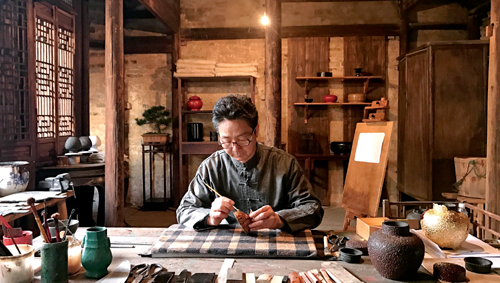
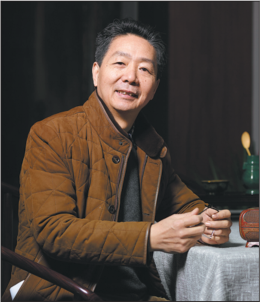

Today's Top News
- Japan hypes excuse for its military build-up: China Daily editorial
- Philippine defense secretary's remarks undermine regional peace efforts
- Mainland strongly opposes Lai's planned 'transit' through US
- ASEAN accelerates de-dollarization
- Xi: China, Russia to promote just, equitable intl order
- Why China still anchors global supply chains



















